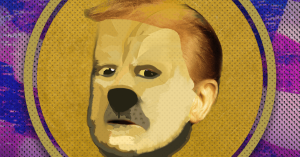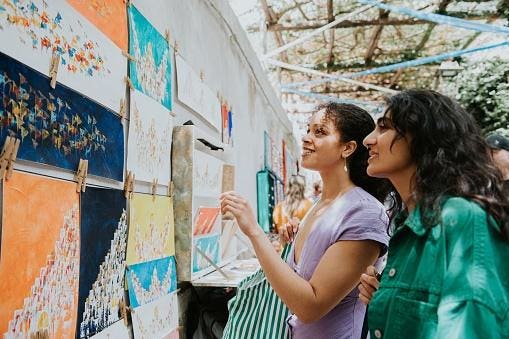As everything “goes digital” what is going to happen to art?
Lately I heard Jennifer Steckel Elliott of Lagom Collections talk about this phenomenon, asking us to think, actually, about what art is.
Art, she said, is built on imagination and skill – it’s beautiful, and expresses feelings.
Some of it also illustrates our passion for technology.
When Steckel Elliott talked about her first job for Ogilvy and Mather at IBM, and her nascent love for data, she was leading into a greater look at the art world, and the world of AI.
“As business has evolved,” she said, “we know that the role of data and the role of outcome-oriented business in all aspects of our life has become more important.”
Seeing patterns, she added, can lead to making actionable recommendations.
Citing her own experience, she talked about how having “too many books” can be a problem in the art world, where it’s better to have digital resources that, frankly, travel better. Asking the audience if they like to read, she mentioned that after a health issue, she found herself less able to consume print media. Now, she said, her company is providing an alternative.
“We’ve created an app that allows you to do this in a very simplistic way,” she said. “Our objective is to have a target application of creative AI.”
As for the comparative value of digital art, she discussed how AI can be an important tool in the fine arts, and the visual arts.
“People who create with ones and zeros instead of a paintbrush are not always considered artists,” she said. “We’re all solving problems, we’re all bringing something together to add value to people’s lives, using our imagination and skill. It brings (value) in different ways.”
As for the pushback, Steckel Elliott suggested that resisting change is human nature, citing some big innovations like the printing press, the digital camera and the Internet.
In terms of jobs, she talked about a move to grow versus reduce the skilled workforce, adding creative value to the economy and addressing the job loss issue.
“We’re adding to jobs,” she said, noting the importance of investing in the foundational layer of this kind of project.
One hurdle? Consumers are also afraid of change.
“When we think it’s simple, it’s not as simple for everyone,” she said.
In the rest of her presentation, she showed us how strategies like the one used by Lagom Collections can change the sale of things like brand sneakers, art pieces, rare coins and other non-fungible valuables (even NFTs?).
Ok, so here’s the use case presented on the company’s web site: you actually create an art piece showcasing your favorite books! So then you can hang it on the wall, instead of the books themselves.
It’s not a bad idea, in a lot of people’s minds, as we all downsize and try to reduce clutter. The question is, do you want to be able to get one of your books down from the shelf, or not? It’s interesting because you might think that you’re likely to do this, but if you actually look back, how often to you actually move the books themselves? If the answer is “never” you might want one of these wall hangings!
That’s one more example of what new technology is doing to change our world. Stay tuned for more as I detail a lot of what has come out of our recent conferences.
Read the full article here










